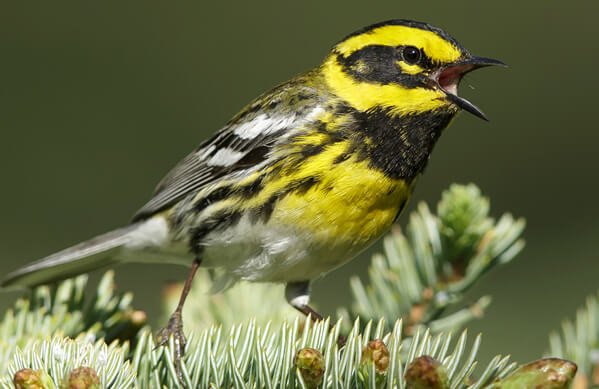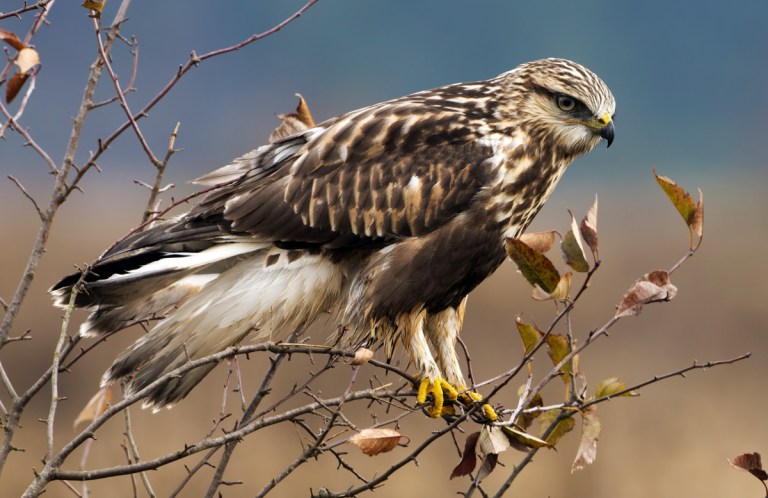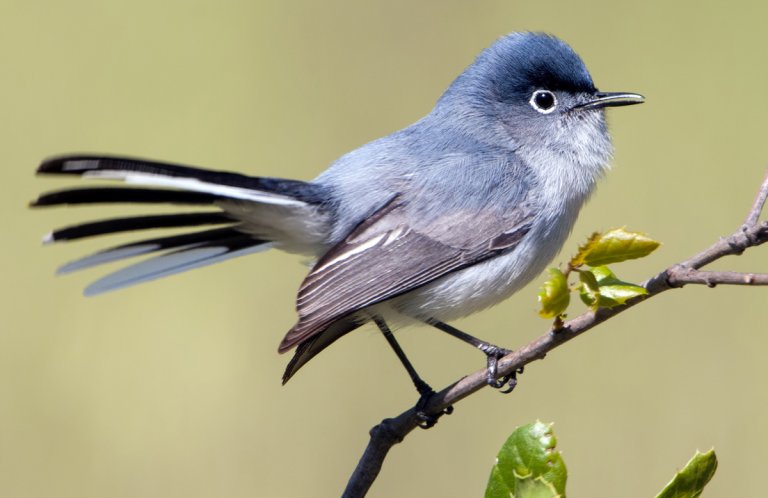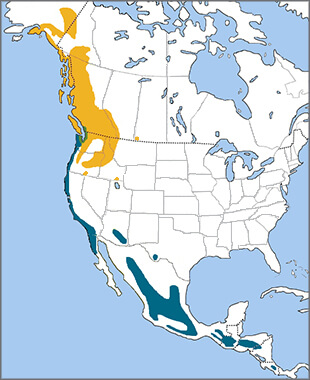
Townsend's Warbler range map courtesy of "Birds of North America" https://birdsna.org, maintained by the Cornell Lab of Ornithology, Ithaca, NY
The striking black-and-yellow Townsend's Warbler is named for American naturalist and collector John Kirk Townsend, who first described this bird in 1834 during an expedition crossing the Rockies to reach the Pacific Ocean. Townsend also first described the Mountain Plover, Chestnut-collared Longspur, Sage Thrasher, and the namesake Townsend's Solitaire, a slim, long-tailed thrush.
One Big Evolutionary Family
The Townsend's Warbler is part of a larger "superspecies" — a group of bird species that are closely related, but developed in geographic isolation from each other. The Townsend's Warbler, along with the Hermit, Golden-cheeked, Black-throated Green, and Black-throated Gray Warblers, is considered part of the Black-throated Green superspecies, or virens group.
The Townsend's and Hermit Warblers in particular are very closely related, and the two hybridize where their breeding ranges overlap along the Oregon and Washington state borders. This hybrid zone appears to be shifting northward as the more aggressive Townsend's Warbler outcompetes the Hermit Warbler, in much the same way that the Blue-winged Warbler appears to be displacing the Golden-winged Warbler in the East.
Continued research on Townsend's/Hermit Warbler ranges and hybridization could shed more light on this ongoing evolutionary change. Are these two birds actually one species? Will they continue to hybridize in the same zone and with the same frequency, or will one species "swamp" the other to the point where one species disappears?
Cool Forest Bird
Townsend's Warblers breed in coniferous forests from southern Alaska and northwestern Canada south into the Pacific Northwest region of the United States. Most are migratory, with different populations of the species wintering in two separate areas. Some Townsend's Warblers winter along the West Coast from Oregon south to Mexico's Baja Peninsula, while others move further south to the highlands of central Mexico and Central America.
Male Townsend's Warblers begin singing even before they leave their wintering grounds. Listen to this species' buzzy song here:
(Audio by Peter Boesman XC322907. Accessible at www.xeno-canto.org/322907)
High-flying Feeder
During the breeding season, Townsend's Warblers usually feed high in the forest canopy, gleaning insects and spiders from foliage, and darting out to catch flying insects mid-air. They may forage low in bushes and shrubs, particularly just before they migrate, or even pursue prey on the ground.
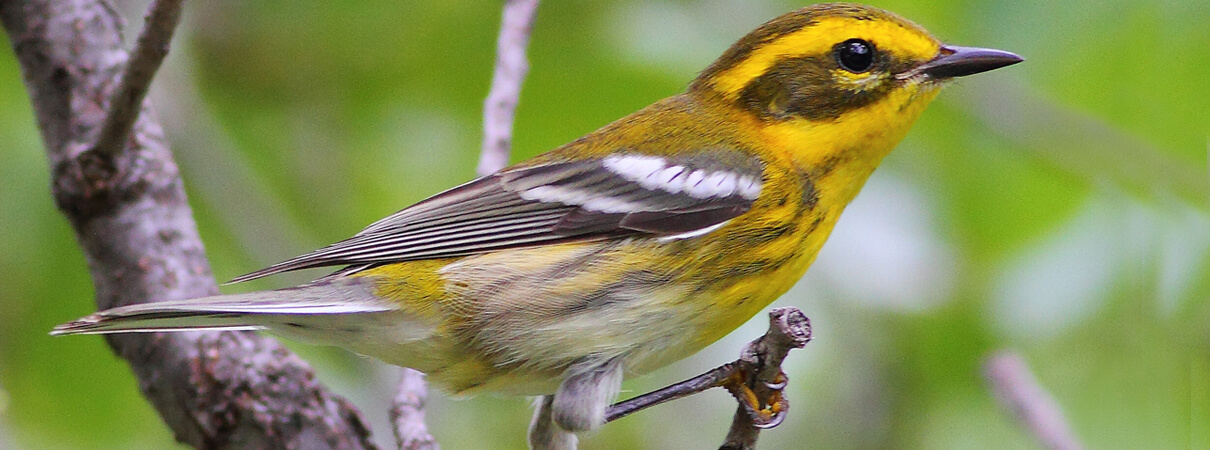
Female Townsend's Warbler by Greg Homel, Natural Elements Productions
Like the Cape May Warbler, the Townsend's Warbler switches to a nectar-rich diet on its wintering grounds, particularly favoring “honeydew,” a sugary substance produced by scale insects. Individuals will fiercely defend territories around trees infested with these insects. These warblers also feed on berries, and visit bird feeders for suet and sometimes seeds. Wintering Townsend's Warblers are often seen feeding in mixed flocks with other bird species.
Conservation in Changing Times
Although Townsend's Warbler populations remain stable, this species is predicted to lose large parts of its breeding range due to climate change. Like so many bird species, it's also at risk from habitat loss.
ABC continues to advocate for the conservation of old-growth forests in the Pacific Northwest, which provide breeding habitat for the Townsend's Warbler and many other species, including the Spotted Owl and Marbled Murrelet. Our BirdScapes approach to conservation maintains habitat for Neotropical migrants, and with our partners we protect many species in reserves, including at Mexico's El Carricito Reserve, where wintering Townsend's Warblers share upland pine-oak forests with other migrants, such as the Western Tanager and Rufous Hummingbird, as well as resident species including the Eared Quetzal.
Donate to support ABC's conservation mission!





































